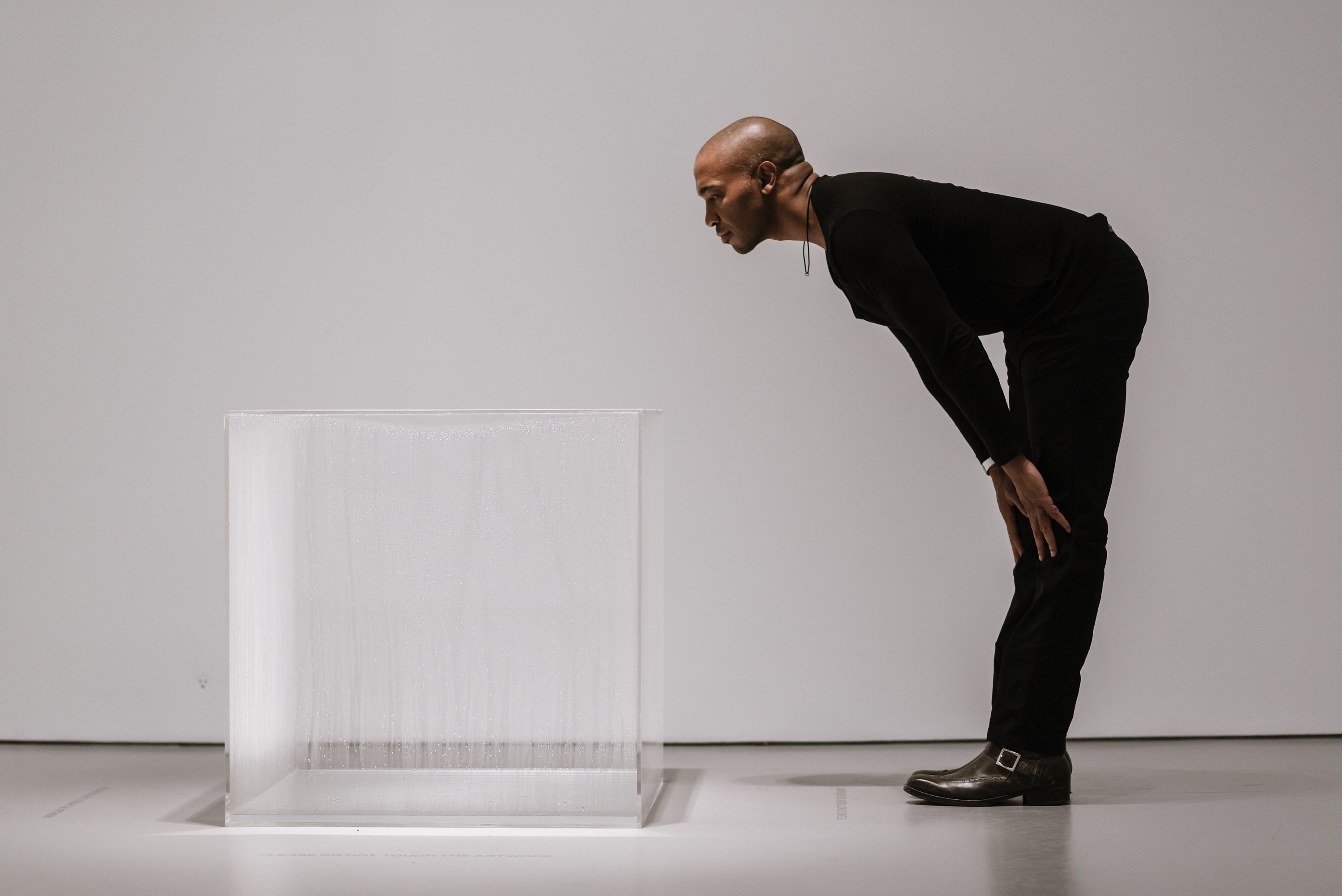How do you take care of an artwork that’s full of water?

“Condensation Cube” (1963; fabricated 2017) by Hans Haacke, Hirshhorn Museum and Sculpture Garden, Smithsonian Institution, Washington, D.C.
It's not the heat, it's the humidity inside this artwork. As if it were a living organism, Hans Haacke's "Condensation Cube" registers and reacts to its surroundings, creating water droplets inside a clear box.
This piece in the Smithsonian’s Hirshhorn Museum and Sculpture Garden is an example of how Haacke has used art to examine broader systems, like politics or economics, at play in the art world. In this case, a self-contained microcosm shifts and changes in reaction to external factors.
But conserving a conceptual, damp piece like this one is different than a painting. Museum conservation experts Briana Feston-Brunet and Anouk Verbeek helped describe the artwork’s composition and care.
Is that really water inside the artwork?
Yes! It’s distilled water that’s been boiled and sterilized. Why sterilized? Because a previous iteration, the museum’s first cube, expired when a fungus grew in it. Conservators learn as they care for artworks made with nontraditional materials—for “Condensation Cube,” a biocide is now added to the water so the cube stays clear and fungus-free for the longest possible time.
What’s the rest of “Condensation Cube” made of?
The cube is made of plexiglass. When it shows signs of aging—such as getting cloudy or cracking—the Hirshhorn has the artist’s permission to commission a new cube and refresh the water inside.
That’s not always the case with an artwork, but since “Condensation Cube” is a conceptual work, the museum serves as a guardian of both the object and the idea. The original cube in the collection came from the artist, but it can be remade. Its acquisition included instructions for making a cube to Haacke’s specifications.

Is the artwork dried out for storage?
No. Whether this sculpture is on public display or in storage, “Condensation Cube” is full of water. It’s a contained micro-environment. (It was mostly recently on view in the 2017 exhibition “What Absence Is Made Of.”)
How do conservators tend to “Condensation Cube” when it’s not on view?
When it’s not on display, “Condensation Cube” is stored in a cool, dust-free environment, and kept out of direct sunlight so that the plastic doesn’t age too quickly.
Museum conservators monitor the cube for fungal growth. If any hint of fungal growth is identified, the artwork is drained, cleaned and sterilized. Then new, sterilized water is added back into the cube through a tiny hole with a pipette. The artwork is resealed tightly with a screw plug roughly the size of lentil.
What other steps have conservators taken to care for the piece?
To learn how to prevent fungus from growing in the water, the museum’s conservation lab received permission to make a series of mini cubes. These are still in the lab today!
